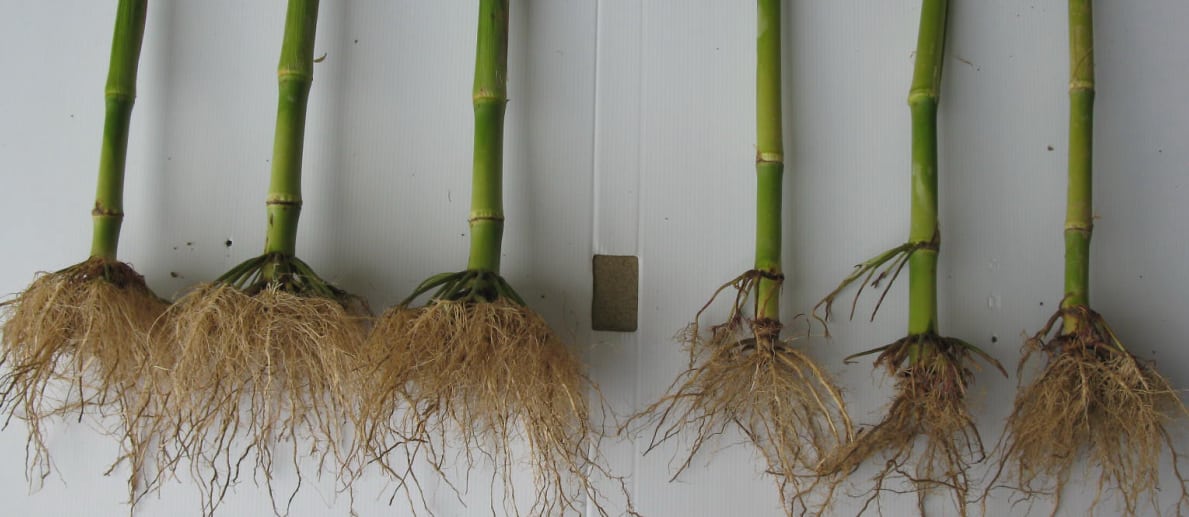Menu
Early Season Pest Patrol
Now that corn has begun to emerge, it’s a great time to scout and observe what may be creeping through your fields. Each year is different, and the weather patterns that we have encountered since the past growing season may have some impact on the level of pest pressures we find. I’ve been watching closely the reports from various universities in our region and beyond, and for the most part they are indicating significant pest pressures across various crops, which is what we would expect based on the relatively mild temperatures we experienced over the winter months.

Minas Gerais, Brazil, November 17, 2009. Undefined farmer walking on corn field, in Minas Gerais State, Brazil
Black Cutworm (BCW) -This pest doesn’t usually overwinter in our region, but earlier this spring, growers, and entomologists reported seeing large larvae feeding in wheat and other species, which indicates the mildness of the past winter. BCW most often arrive with the spring storms and lay their eggs into decaying green tissue. Fields most likely to have high populations are those fields that had heavy winter annual weed pressure or cover crops. Once the egg is laid, the larvae will emerge after 300 Growing Degree Days have accumulated. Populations of the moth flights have been high in multiple areas this spring, so be prepared to scout and protect your new seedlings, as feeding has now begun.
Co
rn Root Worm (CRW) – The CRW overwinter as eggs in the soil. These eggs may be anywhere from just below the surface to several inches deep in the soil. Harsh, cold winters usually have little impact on the survival of the eggs. CRW in our region is primarily a problem in corn on corn acres. It generally takes 2-3 yrs of corn on corn for the CRW populations to expand to the point they reach an economic threshold. CRW has mostly been controlled either by using an in-furrow insecticide or by using transgenic traits.

There has been an increase in trait failures over the past few seasons, and there are ways we can manage differently to reduce the chance of trait failure on each farm. Here are a few tips that can reduce the chance of trait failure.
- CRW traits, regardless of trait provider, only control the CRW larvae during the 1st instar stage of development. CRW traits are considered low dose events. This is very important to remember, because it sets up the following points.
- Weed control, particularly grass control is vital. Did you remember that corn is a grass species? Did you know that the CRW larvae will eat any grass root, not just corn? If you have grasses or cover crops containing grass species such as cereal grains, you’ve just set the table for the CRW larvae. If the CRW larvae have a food source and are developed beyond the 1st instar, and then you take that food source away by applying a herbicide, the CRW larvae will then move to feed on the corn roots. If the larvae are developed beyond the 1st instar, the CRW transgenic trait will not have a high enough dosage to knock them dead, and you may experience root feeding. In this situation, it is not a trait resistance issue, it’s a management issue that can be remedied. I’ve seen this situation multiple times over the past few years.
- Planting date also is important in managing transgenic traits. CRW eggs hatch based on heat units, Delayed planting or late planted corn will be the most susceptible to trait failure. If the crop is planted in a scenario where the CRW larvae have developed beyond the 1st instar stage of growth, the CRW transgenic trait dosage will be unable to control the pest. Other methods of CRW control, such as insecticides are best deployed to manage CRW pressures in delayed planting situations.
- Use multi-stacked traits. Know what trait versions you are using. Having more than one mode of action against the CRW pest, can help manage against any potential resistance issues. Don’t plant the same trait package in the same field year after year. Most seed companies have access to multiple trait providers and rotating your CRW options is a good risk management tool.
- Crop rotation is the best pest management tool. Just remember that rotating corn to cereal grains and then back to corn is not sufficient to manage CRW resistance because you are not changing crop species. Rotate to soybeans or alfalfa or some other non-grass species to manage the CRW populations.
European Corn Bore (ECB) – These pests often overwinter as larvae and reside in the corn or weed residue. ECB are usually not affected by the variation of temperatures, but can be impacted otherwise. Mild, wet springs can make the larvae susceptible to a disease pathogen that may kill off some of the populations. Other factors like fall stalk chopping or fall tillage can a reduce ECB populations. ECB moths often move from field to field or across town to lay their eggs, and successive generations occur in a single season. 1st generation ECB tunnel thru the lower part of the stalk, weakening the stalk and providing and entry point for various pathogens to infect the plant. Common stalk bore can sometimes be mistaken for ECB, and is not controlled by all transgenic trait versions. Non-traited acres are often under heavy pressure and should be scouted and monitored.
Managing insects, weeds and monitoring your fertility sets you up for a good crop year, so invest the time to see what’s happening in your fields.


